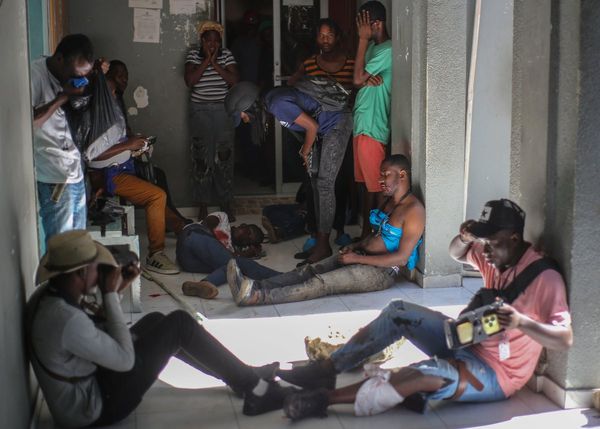
For a few years, Prai Witu village in Indonesia was a shining example of the good that clean energy can bring to an impoverished community.
In 2017, the national government and Millennium Challenge Corp., a foreign-aid arm of the U.S., began installing micro electric grids to give residents access to a constant electricity flow for the first time. Within two years, only 3% of households connected to the grids were using nonrenewable energy, down from 21% before they were installed, according to Millennium Challenge.
At first, life on the island was transformed. The entire network, when completed, included 300 street lights and 48 kilometers of distribution lines. More than 850 houses and 50 public facilities were able to get power throughout the day from 11 micro grids.
A local company, PT Mikro Kisi Sumba, was established to run the network and collect payments for the power. People who were connected to the grid could pay as they went, adding money to their accounts to access the electricity. The Puskesmas health center invested in electric-powered equipment to sanitize tools and refrigeration to store vaccines and anti-venom serum.
Soon, though, signs emerged that things weren’t going smoothly. A few months after construction was completed, some of the battery packs began to leak. Other equipment caught on fire. While the company that provided the batteries had guaranteed them for 10 years, the business shut down and wasn’t able to make good on the agreement, according to Nino Dewa Brisal, president director of Mikro Kisi Sumba.
The system’s performance began to deteriorate and it ultimately stopped working. That left the company without any income to keep functioning. To revive the grid network, Brisal says he would need about $100,000 a year for maintenance and operations, plus nearly $560,000 to replace the faulty batteries.
“We sought help from donors and the government, but those funds only helped us until January 2021,” says Brisal. “We stopped operating.”
Now the microgrid sits idle and many residents have reverted back to their old lives. At Puskesmas, patients who arrive at night need to come prepared with a flashlight. Kurniawan Ndjurumana, the head of the health center, recommends mothers in labor bring plenty of extra batteries. Sometimes they might bring a cell phone into the delivery room to serve as an extra light source.
The Prai Witu project was one of many like it around the world meant to serve remote places that haven't been connected to a larger electric grid. In 2020, investments in off-grid solar projects totaled about $316 million, according to data from GOGLA, an industry association. They mostly use solar panels to power the small equipment, such as a light or water pump, but a network can provide power to an entire community of homes and businesses. Paired with a battery, electricity can become available all day long. Even without a battery, it means places without electricity can get power without burning polluting fuels.
“If you extend the grid, that will take years, decades, it will take a lot of policies,” says Laura Fortes, a project manager at GOGLA. “This is the most cost effective way.”
But Prai Witu’s experience shows the challenges of maintaining well-intentioned programs. Sumba, the 4,000 square mile island that houses Prai Witu and other villages, is a roughly two-and-a-half-hour plane ride from the capital Jakarta. Because it’s so far away, the island has seen little investment in its electric infrastructure even as Indonesia has taken significant strides to get electricity to more of its people. Between 2000 and 2016, the number of people in the country without access to electricity declined by over 75% to 23 million, even as the total population increased by nearly a quarter, according to the International Energy Agency. Many of those still without power are in provinces such as East Nusa Tenggara, which is made up of over 500 individual islands including Sumba.
Most of Indonesia’s power grids are supplied by large fossil fuel plants that burn coal and natural gas. It doesn’t make economic sense to build such a facility to only serve a small island population. But as the cost of solar panels declines, renewable energy is emerging as an increasingly economically viable alternative. And unlike large dirty plants, solar power can be deployed at a very small scale to tap into the sunshine that’s an abundant resource on even the most faraway islands.
For the people of Prai Witu, the solar power was a good deal. The power price was set at 1,860 rupiah ($0.13) for one kilowatt hour, according to Brisal. That was a bit higher than the subsidized electricity price sold by the state-owned Perusahaan Listrik Negara, which villagers didn’t have access to because they weren’t connected to the state-run electric grid.
Amos Kalukur Lidjang, 37, bought a fridge after the grid network went live and set up a small business selling cold drinks and sweet ice. He’s since gone back to working as a carpenter out of his mother’s house, using a diesel generator to fire up his equipment. On a typical evening, a generator uses five liters of fuel, which costs about two-thirds more than what villagers were paying for an entire month with the grids.
Still, there’s is hope in Prai Witu that some aspects of the clean energy grid will endure. The health center installed its own solar system on the roof. At home, people have returned to using generators, but many have also bought small solar systems to power lights and charge electric equipment.
Nicolas Timbu, 62, invested in several electronics when the grid was operational, including a TV and salon equipment for his wife. Today the store he owns next to the village market is one of the few structures lit up at night, powered by mini panels that are only good for an hour or two of electricity. His family hooks the small panels up to their car battery, but even then doesn’t store enough power to fully charge a mobile phone. So they also share a benzene-fueled generator with a neighbor, relying on a mix of old and new energy.
©2022 Bloomberg L.P.







